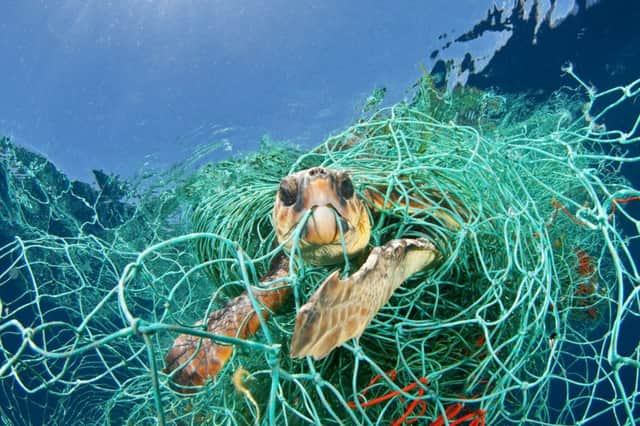How we've killed 60% of wildlife on earth since we walked on moon


In another generation, only a tenth of the world’s land area will be free from the impacts of human activity, and only an ambitious “global deal” for nature and people, on the scale of the Paris Accord to tackle climate change, can reverse the trend, the World Wildlife Fund says.
Its Living Planet Report has found that the percentage of seabirds with plastic in their stomach has have increased from five per cent in 1960 to nine out of 10 today, and that the world has lost around half its shallow water corals in just 30 years.
Advertisement
Hide AdAdvertisement
Hide AdOverall, populations of more than 4,000 species of mammals, reptiles, birds, fish and amphibians have declined by an average of 60 per cent since 1970, shortly after the astronaut Neil Armstrong planted the American flag and took his “giant leap for mankind” on the surface of the moon.
Tropical areas have seen the worst declines since then, with an 89 per cent fall in populations monitored in Latin America and the Caribbean.
Species which live in fresh water habitats, such as frogs and river fish, have seen their global populations fall by 83 per cent, according to the Zoological Society of London, which tracks the abundance of wildlife.
From hedgehogs and puffins to elephants, rhinos and polar bears, wildlife is in decline, due to the loss of habitats, poaching, pollution of land and seas and rising global temperatures, the Living Planet report warns.
Advertisement
Hide AdAdvertisement
Hide AdCurrent action to protect nature is failing because it does not match the scale of the threat facing the planet, it says.
“Exploding” levels of human consumption are driving the impacts on nature, with over-exploitation of natural resources and the use of pesticides in agriculture.
Climate change and plastic pollution are also significant and growing threats.
The report warns that wildlife is not just “nice to have” for humans. Food and medicines, it says, all rely on natural resources.
Advertisement
Hide AdAdvertisement
Hide AdWith the world set to review its progress on sustainable development and conserving biodiversity by 2020, under UN agreements, there is an opportunity for action in the next two years, the WWF argues.
Its chief executive, Tanya Steele, said: “We are the first generation to know we are destroying our planet and the last that can do anything about it.
“Our wanton destruction of nature, coupled with the brutal chaos of climate change, is the biggest threat to humanity.
“If we want a world with orangutans and puffins, clean air and enough food for everyone, we need urgent action from our leaders and a new global deal for nature and people that kick starts a global programme of recovery.”
Advertisement
Hide AdAdvertisement
Hide AdThe TV presenter Ben Fogle, a WWF ambassador said: “I don’t want my children growing up to learn about tigers, rhinos and even hedgehogs through history books and museums.
“I want them to see our world’s diverse and wonderful wildlife with their own eyes.
“But our inaction is wiping out species across the globe and it terrifies me that, unless we make committed and immediate change to the way we live, there will be no other option for them.”